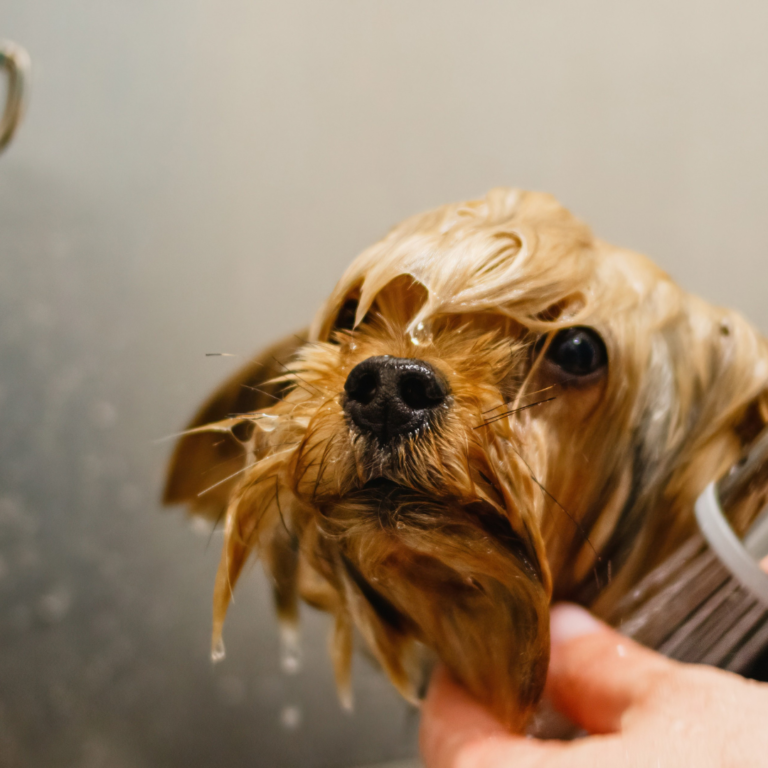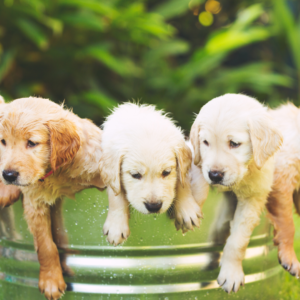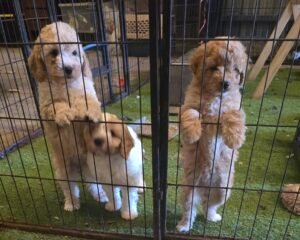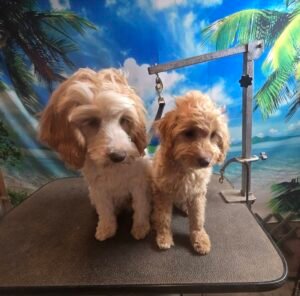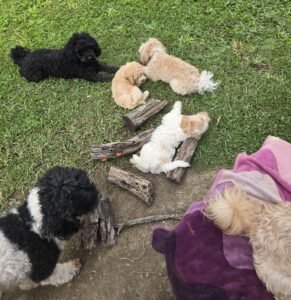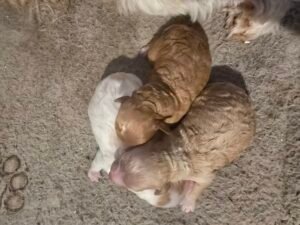Grooming dogs as a professional is not an easy task. It is a physically demanding job that frequently involves working with dogs considered aggressive. Society labels any dog that is performing actions, that we believe, are designed to hurt us as aggressive. The owners of these dogs are often at a loss when the groomer tells them their dog is aggressive. The general comment is “But fluffy is never like that at home”
Are these dogs aggressive or are they just scared and exhibiting aggressive behavior?
More often than not these dogs are just plain frightened and the only way they can show this is by using aggressive behavior in an attempt to get what is scaring them to stop. They are scared because they are anticipating danger, pain and/or they are in a totally unfamiliar environment. They are also scared because their normal pattern of dealing with what they see as an aggressive act towards them is not working and they are unable to flee from the aggressor. They do not understand that what is being done is for their own good.
“Fear elicits a series of physiological and anatomical processes aimed at the best possible solution for survival. Fear usually leads to flight or immobility and sometimes to displacement behavior.” 1 p.18
Dogs are hardwired with an aggression inhibition system 1 which means that when faced with aggressive acts they undertake behaviors that are designed to stop that aggression by the opposing dog.
Roger Abrantes in Dog Language – An Encyclopedia of Canine Behavior provides an excellent description;
“Puppies play by tumbling around and biting one another. Suddenly one of them gets a grip on the other’s ear. It bites hard and the poor brother or sister howls in pain. The other puppy succeeds in getting its teeth in the tender skin of its sibling’s belly. Much whining and yelling follow. They stand still for a short while, then let go.
Next time they act slightly differently. One will gasp the other’s ear only until the puppy begins making noise. It will react to the sibling’s vocal distress, which works as a mechanism to inhibit or control aggressive behavior Previous experience showed the puppy it is better to let go at the first signs of vocal behavior, or its belly will hurt“1 P.23
Evolution has designed dogs to avoid threatening situations they believe will lead to injury by setting them up with strong behaviors that act to moderate any aggression from others in their social group, including humans. Sadly evolution forgot to teach those communication skills to humans.
Consider then a dog or puppy that has learnt this behavior but is now in a grooming salon. It is frightened by the strange person, the weird noises and the process that is occurring. It considers the loud clippers or dryer hose to be identical to the threat posed to it by an aggressive sibling. It wants to flee but is prevented by the grooming noose or the big scary monster holding the dog in place. It initially displays calming behaviors,2 such as lip licking, looking away and yawing, all of which normally work to defuse a potential situation. Confused by the humans inability to understand its communication signals it is then forced to move to the next level by growling and then possibly nipping. This dog is doing what it is hardwired to do, enacting the aggression inhibition system, but it is totally confused as to why it isn’t working. In a best case scenario, for the groomer, they shut down. Shut down is however not a best case scenario for the dog as the stress hormones signalling the need to fight or flight are still circulating. In a worst case scenario you have a groomer, unskilled in canine body language and failing to understand these calming signals who exacerbates the problem by failing to understand how a dog’s aggression inhibition system works. They push the dog harder and harder to submit to the process and in so doing undermine the learning system of this dog. They teach a dog that calming signals, whining and growling don’t work and force it into more aggressive behavior such as biting.
Dogs do what works and repeat behaviors that gain them the outcome they prefer. A dog that is finally forced into a bite wins as biting is a sure fire method to stop the unwanted interaction. In an older dog this is less concerning however if this is a puppy, especially if it is in a fear period, can be disastrous. Over time this dog learns to forgo all the initial methods of communication and go straight to the bite. In a vicious circle the groomer then mark this dog as aggression, or worse all dogs as aggressive, and develops harsher grooming methods.
So what is a better way to manage this interaction?
- Learning about calming signals and low levels of aggressive behavior and understanding that when given they mean the stress level is rising and the dog needs some time to become more comfortable and that alternative handling procedures need to be employed.
- Not pushing a dog until it is past the point of no return and the encounter ends up with either a shut down dog or a bitten groomer
- Learning how to apply counter-conditioning and massage methods in a grooming situation.
- Running a salon or mobile van that has a calming environment with staff that have calming energy.
- Encouraging owners to bring their dogs in before they are horribly matted and before they are older and having them on an appropriate schedule so they are less stressed during grooming
- Teaching owners the importance of socialization so that their dogs are exposed to unusually situations from an early age and develop the ability to deal with them.


Kareema
Healing Energy Animals
Kareema is the owners of Healing Energy Animals where devil dogs, horrible horses and crazy cats are turned into perfect pets using Relationship Animal Training and over 50 years of experience training a wide variety of animals.
Healing Energy Animals provides owners and pet professionals assistance with with common pet behavior training, feeding and grooming issues such as barking, escaping, scratching, aggression and fleas. Kareema consults and writes widely on a range of pet care issues for owners and also assists pet care professionals in setting up and growing their businesses by the provision of customer handling advice, sales and marketing strategies and up to date product information that allows for the differentiation of their pet care business from their competitors.
Healing Energy Animals is an Australian business but operates worldwide via the provision of virtual services.
